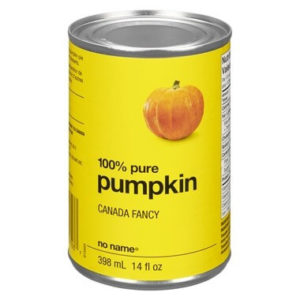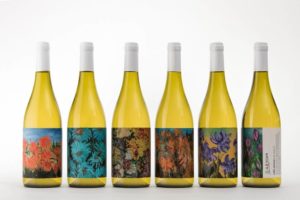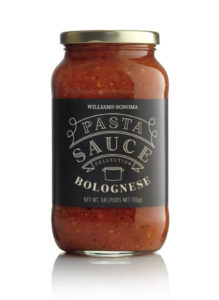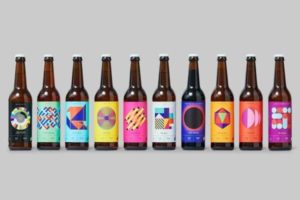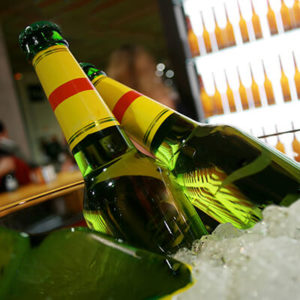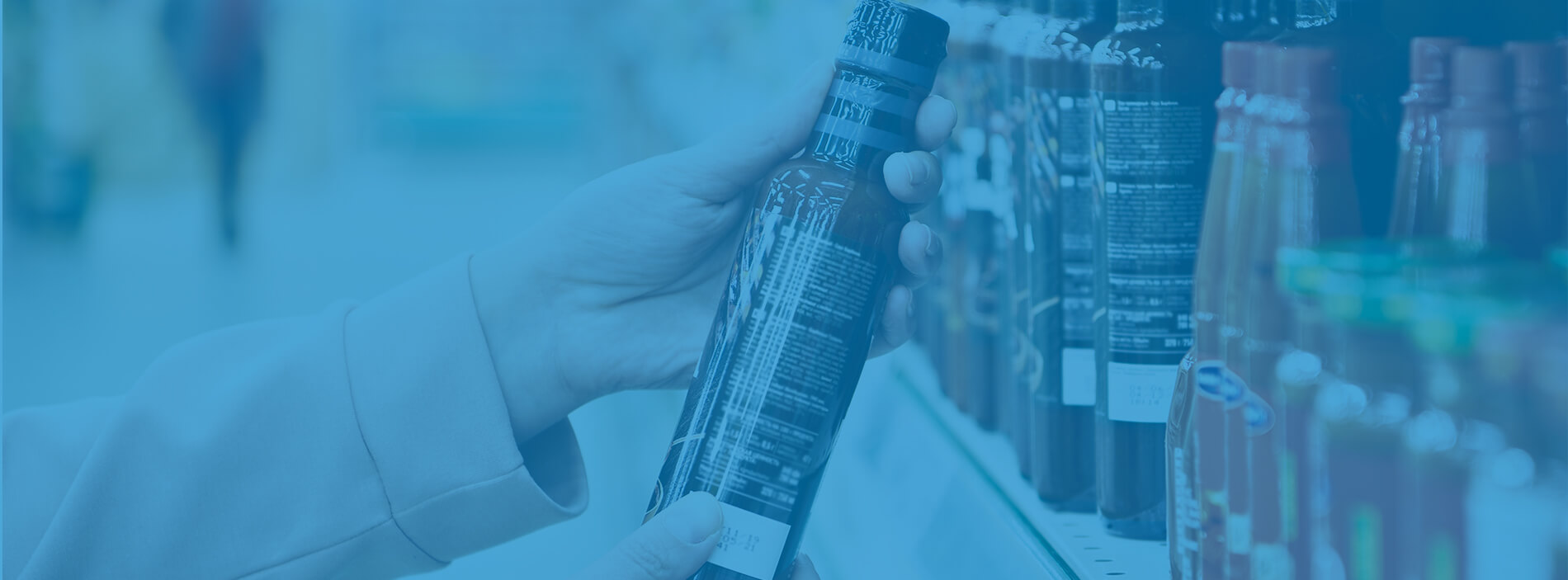
The Complete Guide to Custom Food and Beverage Labels
Only a generation ago, food and beverage companies had a more straightforward task when it came to winning new customers. Store shelves typically only had a couple of choices for any given item, making it much easier to stand out against the competition.
Today, the market has exploded. Food and beverage are increasingly fast-paced industries. Facing dozens of choices for each item, consumers simply do not have the time or energy to research each item they buy, relying instead on whatever label appeals to them the most. These split-second decisions can lead to decades-long loyalty, making first impressions more important than ever, and elevating the role that labels have to play in cementing a brand and influencing purchasing decisions.
In this guide, we will:
- Review the multiple elements you will need to consider when designing labels for your food or beverage products.
- Provide some examples of labels that have stood the test of time.
- Cover what you need to know to get a food or beverage label that not only looks great, but also performs.
- Talk about how to protect your brand and make your production efficient.
Let’s dive in!
To jump to a specific section, click on one of the links below.
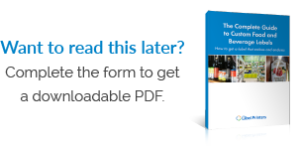
Designing Your Food or Beverage Label
Whether you’re launching a new company, introducing a new product, or simply looking to refresh your brand, putting thought into your label design is never time wasted. Consumers generally won’t get a chance to taste-test your product before buying, so they need to rely on what your label tells them. This makes design incredibly important.
Expert Advice: Involve your custom label supplier as early on in the design process as you can. They can advise you if your design idea might have printing-related repercussions that could cost (or save) you more money.
What’s Your Brand?
 Before diving straight into the design process, you will need to decide where in the market you want your product to stand. If your brand is a mismatch with your target audience, people simply won’t buy it.
Before diving straight into the design process, you will need to decide where in the market you want your product to stand. If your brand is a mismatch with your target audience, people simply won’t buy it.
If your company already has a strong and well-defined brand that is attracting all the right people, that’s great! This makes it all the more important to design a label that complements that brand, ensuring that the people who like your company will be attracted to your products.
If you’re still a bit uncertain about your brand, that’s okay. It’s perfectly normal for companies to try on a few identities for size before picking the one that feels right. (This is why there is an entire industry helping companies identify their brand – it’s not a decision to be made lightly.)
To get a better handle on your brand identity, ask yourself questions like:
- Who do we want to attract? What are their values? Their style? Their habits? How will they be using our products? The more clearly you can visualize this ideal buyer, the better.
- What feels true to us? What do we want people to say about our company? What otherwise positive qualities would we not want people to associate with our company?
- How do we want people to feel when they think of our company? What mood do we want to evoke?
- What is our product? Are we creating a heavy stout, a line of gourmet jams, or a nutritious line of organic soups?
These questions are not meant to provide you with a complete brand identity, but they can act as a launchpad to start asking the questions that will determine your brand’s visual identity and how that will translate to your labels.
Visual Identity and Your Labels
“A picture paints a thousand words,” as the old saying (or song lyric) goes. While it may sound cliched, there is truth to the statement. The visual elements you choose for your food or beverage label can tell a powerful story about who you are and should therefore be chosen with care.
Imagine, for example, a company trying to cultivate an energetic and hip brand that uses unadorned white labels with navy trim and gold Times New Roman lettering. Consumers will receive an impression that this brand is traditional, conservative, perhaps even a bit staid.
Here are some of the elements to consider when selecting the visual elements of your label:
Colors
Before getting into label colors, first look at the color of your product’s packaging. Are you using brown beer bottles? Clear glass jars? Cans? It’s important to keep your packaging in mind so that your label color and packaging color work well together instead of creating a visual mess. A chocolate brown label that looks chic and elegant on a clear bottle may simply look muddy against a green bottle.
It’s also important to note what moods different colors evoke. There’s a reason why so many traditional companies (banks, for example) use blue in their branding: It evokes reliability and professionalism, qualities that are important to those companies’ customers.
Keep in mind that how the colors are used can be almost as important. Bright colors like orange, yellow, or neon colors can bring energy to your label, but if used in large doses, can be overwhelming and even off-putting. They’re a great way to add a bit of playfulness to an otherwise classic label, however —imagine a sophisticated, dove-gray wine label with a razor-thin hot pink border.
Typography
Like colors, the fonts you choose for your label can make or break your brand identity. While current trends lean towards sans serif fonts like Helvetica or Arial, serif fonts like Times New Roman or Georgia can create a traditional or even heritage look that may mesh perfectly with your brand image.
In fact, many craft breweries and other small-batch food or drink producers are turning to fonts that look like they came from a typewriter or even a fountain pen, to emphasize the authenticity and handmade quality of their products.
Imagery
Cartoon characters or tasteful iconography? Psychedelic prints or cool minimalism? The imagery you choose for your labels should generally complement the overall look and feel of what the label is conveying.
That’s not to say you can’t be a bit tongue-in-cheek or subversive — just make sure you know your customer will be in on the joke.
Copy
Your label is saying a lot without using any words … but what about the words it IS using? How you describe your product on the label can make it sound tantalizing, or terrible. It’s therefore worth investing in professionally written copy to make sure the words on your label complement your branding and its tone while also doing a great job of selling your product to any new audiences.
After all, which sounds more appetizing: “dark chocolate” … or “decadent, velvety dark chocolate”? Could your item sound more appealing if you talk about how it could be used, or what it could be paired with?
Keep in mind as well that because you’re dealing in food and/or drink, as opposed to say, socks, you will also have some legal requirements that apply to your label copy. Alcohol products like wine or beer, for example, typically have to list net contents and alcohol content along with beverage class and type, but also have requirements regarding font size and legibility. Be sure to stay updated on the labeling requirements for your industry so you don’t run afoul of any regulatory bodies and wind up paying for labels you can’t use.
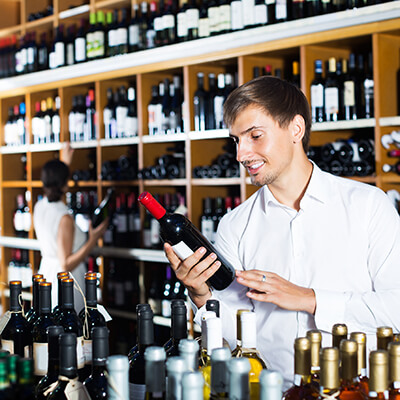 Special Touches
Special Touches
In addition to your colors, fonts, imagery, and copy, there are special elements that your custom label printer can incorporate to help enhance your visual identity. An elegant, traditional brand’s elegant and traditional typography could be elevated by some embossing. A clear wine bottle could become gorgeous with a front label that has a cutout, letting the customer look through to a beautiful design on the back label. Knockout printing, with the desired shape “knocked out” of the background color, can highlight a modern and funky brand.
Examples of Great Food and Beverage Labels
When all the elements come together, magic happens – and you end up with a visually arresting food or beverage label that stands out on the shelves.
For further inspiration, here are examples from brands who got it right.
No Name Brand
We’ve talked about No-Name Brand – a Canadian icon – before, and with good reason. This label gleefully breaks the “not too much yellow” rules while using design elements that send a strong message: You’re getting a basic, reliable food item that will be easy on your wallet. And even though the labels are quite plain, they typically still feature an image of the contents, reassuring customers as to the purity of what’s contained inside.
Viña Abades
Doña Dolores Arjona is the co-founder of Abades, a 25-year veteran in the tourism and hospitality sector in Spain. She is also well-known artist. When designing a label for Abades’ own line of white wine, the designer chose to pay homage to Arjona’s artwork, inextricably linking her to the wine’s branding. This creates a strong visual identity that will never be mistaken or confused with any other.
Williams-Sonoma
Williams-Sonoma has built a strong name for themselves as purveyors of fine gourmet foods. Their cookbooks are printed on rich paper with stunning photography, their cookware is hefty and well-designed, and their labels share the same mood of tasteful luxury. This label is reminiscent of a chalkboard at a high-end Italian ristorante. Note the thoughtful addition of the word “collection” to the term “pasta sauce,” making the product sound immediately more prestigious.
Halo Brew Beer
Halo Brew is wildly experimental with their beer, adding the entire produce section and some quirky surprises (IPA mixed with Pinot Noir) to the mix. To enhance their “let’s do a science project!” vibe, their labels pop with bold colors, geometric shapes, and spare lettering. The end result looks like a series of 1960’s-era science fiction book covers: stylish, futuristic, and bold.
Ordering Your Custom Food and Beverage Labels
As mentioned, you’ve ideally been in conversations with your custom label supplier during the label design process, so that they can lend their perspective to your design choices. Once the design has been signed off, however, it’s time to really get down to brass tacks: Ordering your labels.
And while a good custom label supplier will make the process as smooth and straightforward as possible, ordering your labels still requires a certain amount of thought and analysis. This applies particularly to food and beverage products, which are typically subjected to a wide range of environments and temperatures. After all, who wants to be that company with beautifully designed labels … that have worn off or fallen off by the time the product hits the shelves?
An experienced label printer will ask you about the following elements, to make sure they can recommend the best possible label for your product.
Application Surface
Adhesives bond in different ways to different surfaces. To see this theory in action, remove a bandage from its protective backing. Now, try removing it from your forearm.
Kidding aside, the application surface makes an enormous amount of difference when it comes to which adhesive your custom label supplier will choose. Is your container clear glass or frosted glass? Or is it plastic? If so, what kind of plastic? Is it smooth or textured? Knowing these details when you order your labels can make the process go more quickly and can increase the chances of your labels performing perfectly.
This is yet another reason why it’s best to involve your label supplier early in the process: The team involved in the design and production of the packaging will have those details much more readily to hand than a purchasing manager, for example.
Most labels have “pressure-sensitive” adhesive, meaning that the adhesive doesn’t require heat, solvents, or evaporation to work. You press it on, and it adheres. How well it adheres and for how long depends on the application surface, the pressure applied at the time of application, and the environment to which the adhesive is exposed.
The Label Environment
Food and beverage items need to go through a wide range of environmental changes during packaging, shipping, and storage. A food item may need to be processed with heat (most canned and jarred goods, for example), but are then exposed to colder temperatures during transportation, storage, and household use. Besides temperature, here are some other environmental considerations:
Exposure to moisture: Will your product be submerged in a cooler full of ice water? Or will the product itself possibly spill down the sides of the container and onto the label?
Exposure to light: Will your label benefit from special treatments that make the colors pop in fluorescent store lighting? Will it be subject to hours of bright sunlight at a picnic? Or should it dazzle during a candlelit dinner?
The Purpose of the Label
As we mentioned above, there will be certain text that is legally required to be on your label. Knowing what those requirements are can help your custom label supplier make sure the design elements you’ve chosen don’t impede the legibility of any legally required text.
A label supplier who has printed food and beverage labels for decades will know all the ins and outs of how to make sure your label is compliant, while still letting the design take center stage.
Color Considerations
Remember how we talked about color? Your label supplier will work with you to make sure those colors are shown at their best. If you’ve chosen vivid colors for your label design but have your heart set on unbleached paper labels, you may wind up with a disappointing final product when the paper labels absorb the ink, reducing the intensity of the colors.
Having these conversations early on is paramount so your label supplier can let you know which materials will work best with the design you have in mind, and how those material choices will affect your overall budget.
Application Method
Are you creating a small batch of a food or drink item for a special event and want a handmade, personalized touch? You may want labels that you can hand apply. For larger volumes, however, hand-applied labels can be an impractical choice. At that point, rolls of labels to be used in application machines are likely a better option.
Volume and Distribution
Storage space costs money. But volume pricing is often a better deal. An experienced custom label supplier will talk to you about your anticipated volume needs and may be able to offer “just-in-time” production methods that keep you from having to store tens of thousands of labels in your warehouse.
And if you’re planning to ship your product beyond your own borders, this is an important discussion to have with your label supplier as they may be able to implement inventory control and product tracking features on your labels, potentially saving you from huge losses in diverted products.
Getting a custom food and beverage label that looks great and performs perfectly is not necessarily a complex task, but it is one that requires time, consideration, and expertise.
Learn more about how The Label Printers’ expertise can make your custom food and beverage label perfect and read about some of our food and beverage customers and what their experiences were during their product label journey.


